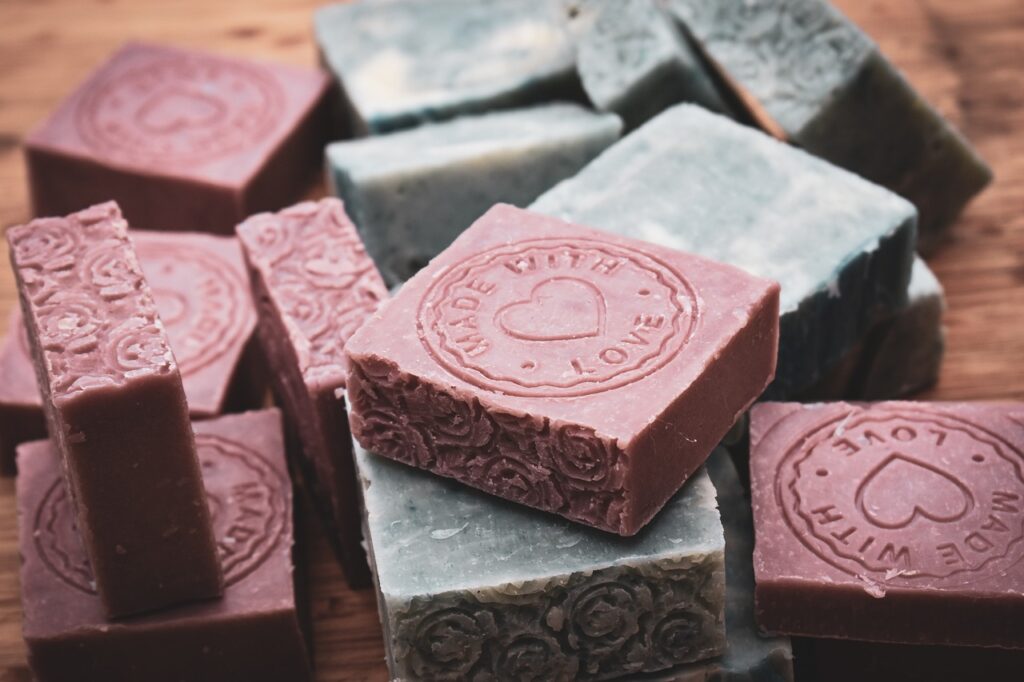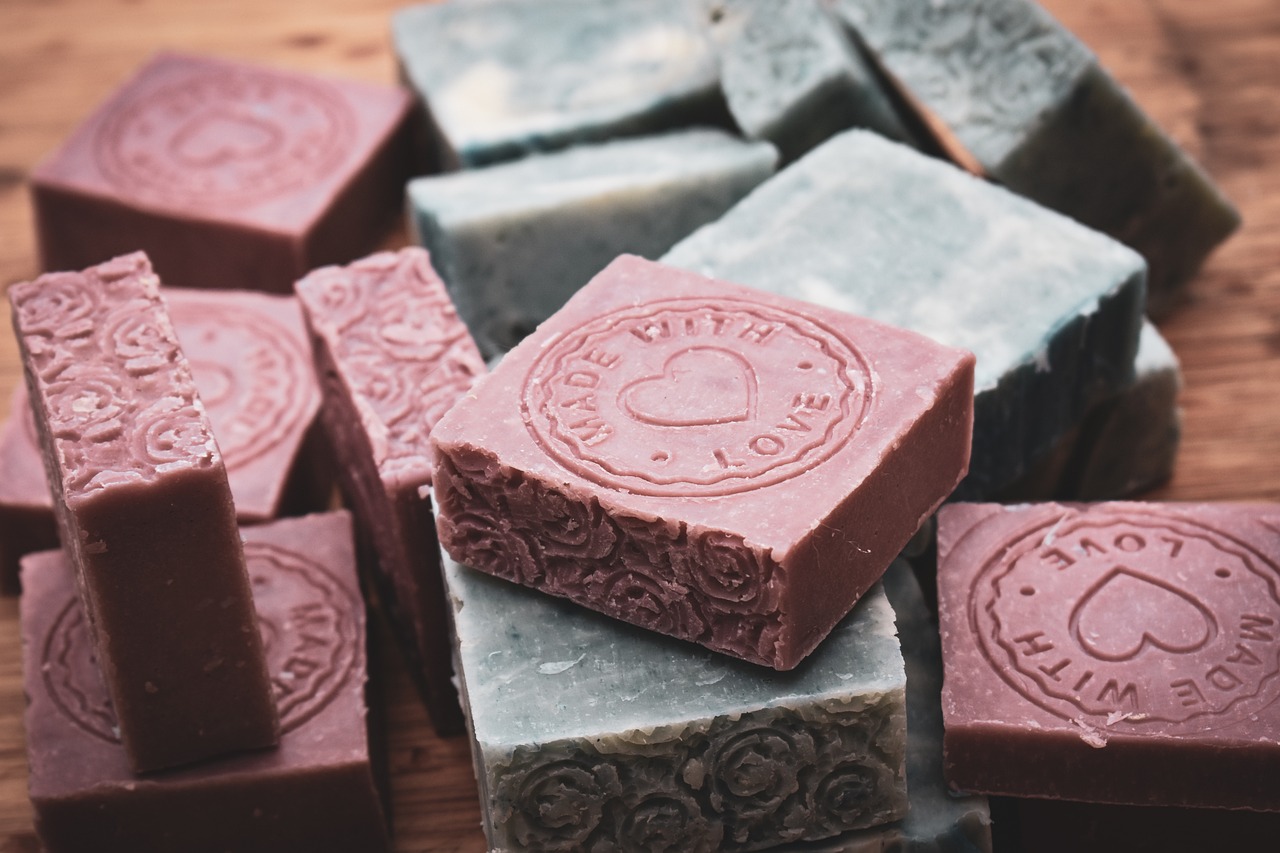Have you ever wanted to create your own all-natural and beautifully crafted soaps? The joy of soap making is not only in the final product, but also in the process itself. From choosing the ingredients to molding the soap, every step is an opportunity to express your creativity and make something truly unique.
To get started with soap making, you will need some basic supplies such as oils, lye, and fragrance oils. Don’t worry if you’re new to soap making, it’s not as complicated as it may seem. With some practice and patience, you can create artisanal soaps that are both eco-friendly and gentle on your skin.
So, roll up your sleeves and get ready to immerse yourself in the wonderful world of soap making.
Getting Started with Soap Making Supplies
Ready to dive into the world of soap making? Let’s start by gathering all the supplies you’ll need!
First things first, it’s important to choose quality ingredients. Look for high-quality oils and butters such as coconut oil, shea butter, and olive oil. You’ll also need lye, which is a caustic substance that reacts with oils to create soap. Be sure to purchase food-grade lye, as it’s safe to use in soap making.
Next, think about the fragrance you want to add to your soap. Essential oils are a great way to achieve a natural, pleasant scent. There are so many options to choose from, such as lavender, peppermint, and lemon. Just be sure to research the appropriate amount of essential oil to use, as too much can irritate the skin.
With these supplies in hand, you’re ready to embark on your soap making journey!
Understanding the Basics of Soap Making
To get started, it’s important to grasp the fundamentals of how to create homemade bars that are gentle on skin. One of the first things you need to know is the importance of using the right soap making equipment. You’ll need a large stainless steel pot, a thermometer, a stick blender, and soap molds.
It’s also important to wear gloves and safety goggles when working with lye, a necessary ingredient in soap making. Speaking of lye, safety precautions should always be taken when handling this caustic substance. Always add the lye to the water, not the other way around, to avoid a dangerous chemical reaction. Make sure to mix the lye solution in a well-ventilated area to avoid inhaling fumes.
It’s also important to keep children and pets away from your workspace when you’re working with lye. With these basics in mind, you’ll be well on your way to creating beautiful, natural soaps that are gentle on your skin.
Exploring Different Soap Making Techniques
Now that you’ve mastered the basics of soap making, let’s dive into various techniques that can take your creations to the next level.
Two of the most popular soap making techniques are cold process and melt and pour. Cold process involves creating soap from scratch using lye, oils, and water. Melt and pour involves melting pre-made soap base and adding your own ingredients and scents.
Cold process soap making requires more time and safety precautions, but it also allows for more creativity and unique designs. Melt and pour soap making is a great option for beginners or those who want to create soap quickly without worrying about the lye component.
Regardless of the technique you choose, it’s important to always prioritize safety. Always wear protective gear such as gloves and goggles, and make sure to work in a well-ventilated area. When working with lye or other chemicals, handle them carefully and follow the instructions closely.
Keep in mind that different techniques have different safety considerations, so be sure to research and understand the specifics of each before starting your soap making project. By following proper safety precautions, you can enjoy the joy and creativity of soap making without any accidents or injuries.
Crafting Natural and Eco-Friendly Soaps
As you continue your exploration of soap making techniques, you may want to consider utilizing organic and sustainable ingredients to create environmentally-friendly and health-conscious products.
This means choosing natural ingredients like essential oils, herbs, and clays to add fragrance, texture, and color to your soap. Not only are these ingredients better for your skin, but they’re also better for the environment as they’re biodegradable and won’t harm aquatic life.
In addition to choosing natural ingredients, you can also opt for eco-friendly packaging to further reduce your environmental impact. This can include using recyclable or biodegradable packaging materials, like paper or cardboard, and avoiding excessive packaging or non-recyclable plastics.
By crafting natural and eco-friendly soaps, you can create products that not only benefit your skin, but also benefit the planet.
Adding Personal Touches to Your Soaps
Get creative with personalizing your soap by adding unique touches that reflect your personality and style. Customizing fragrances is a great way to add a personalized touch to your soap. Experiment with different essential oils and see which combinations you like best.
You can also add herbs, spices, or even coffee grounds to create a more textured soap with a unique scent. Another way to add a personal touch is through decorative soap embedding. This involves adding small objects, such as dried flowers or toys, into the soap mixture before it sets.

This can create a fun surprise for those who use the soap. You can also experiment with different colors and textures by adding ingredients like cocoa powder or activated charcoal to the mixture. The possibilities are endless when it comes to adding personal touches to your soap making process.
Frequently Asked Questions
How can I incorporate medicinal herbs into my homemade soaps?
To incorporate medicinal herbs into your homemade soaps, consider making a herbal infusion by steeping the herbs in hot water. This can be added to your soap mixture for added benefits. You can also use herbs for soap coloring.
Can I use essential oils in soap making and how much should I use?
Yes, you can use essential oils in soap making. However, it’s important to be cautious about fragrance levels, as too much can cause skin irritation. Use around 1-2% of essential oils based on the total weight of your soap recipe.
What are some common mistakes new soap makers make and how can I avoid them?
Common mistakes new soap makers make include not measuring ingredients accurately, not using enough lye, and not allowing enough cure time. Troubleshooting tips include double-checking measurements, properly calculating lye amounts, and being patient during the curing process.
How can I create a successful soap making business?
To create a successful soap making business, you need to focus on marketing strategies and sourcing quality materials. Find your niche, create a brand identity, and connect with your target audience through social media and events.
Can I make soap without using lye?
You can make soap without lye by using natural soap alternatives like melt and pour soap base or hand-milled soap. However, it’s important to remember soap making safety and follow proper measurements and instructions.
Conclusion
Congratulations, you’ve successfully learned about the joy of soap making! With your newfound knowledge, you can now begin crafting natural and artisanal soaps that are not only eco-friendly but also personalized to your liking.
By understanding the basics of soap making and exploring different techniques, you can create soaps that cater to your specific preferences and needs. Additionally, incorporating natural ingredients into your soap making process can provide numerous benefits for your skin and the environment.
So why not give soap making a try? With the right supplies and techniques, you can create beautiful and functional soaps that are both a joy to use and a pleasure to make.
So go ahead and let your creativity shine!






